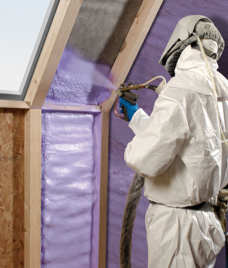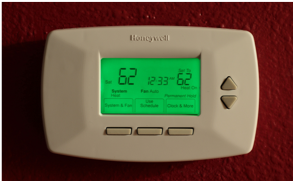The southern portion of the United States is generally known for its sunny days and warm temperatures. However, the forecasts that have made up the beginning of 2018 completely debunked this reputation. 佛罗里达有雪, 德州发布风寒警报, and record-breaking cold temperatures in Georgia, residents of these states are unaccustomed to dealing with the extreme cold – and so are their homes. Prevent your pipes and water meter from freezing this winter (and every year after) by taking advantage of the following 13 tips:
- Drain water from swimming pools and water sprinkler supply lines by following manufacturer's or installer's directions.
- Remove, drain, and store hoses used out门s. Close inside 阀门 supplying out门 hose bibbs and open the outside hose bibbs to allow water to drain. Insulate outside faucets and backflow devices with newspaper, 破布, 或者类似的材料, covering them with plastic and securing them with string or wire.
- Insulate all walls where pipes are located. The pipes that most likely to freeze are those nearest an uninsulated wall, 门, 窗口, 车库, 阁楼, 地下室, 或者沿着非绝缘地板. Check around the home for other areas where water supply lines are located in unheated areas.
- Pipes themselves can also be insulated with foam sleeves, 玻璃纤维套管, 高温胶带, 或者加热电缆. This can be an easy solution for pipes that are exposed but can get expensive if walls, 地板, or ceilings have to be opened in order to properly insulate the pipe. Newspaper can also provide some degree of insulation and protection.
- Consider relocating exposed pipes to provide increased protection from freezing.
- Pipes are often located in cabinets so keep interior 门s open. This makes sure that the heat from the rest of the house can circulate around the pipes as the temperature drops.
- Let water drip from faucets served by exposed pipes. This can not only prevent the pipes from freezing but also can break up ice that has already started to freeze inside pipes. 除了, turn on the water periodically at these faucets when outside temperatures have been below freezing for several days.
- Keep the thermostat set to the same temperature both during the day and at night. You may incur a higher heating bill but you can prevent a costly repair job down the road.
- If you will be going away during cold weather, leave the heat on in your home set to a temperature no lower than 55°F. 当你不在的时候, never completely shut off the heat unless you drain all the pipes and toilets first. 如果你这样做, be sure to turn off your water heater first and drain your heating system’s pipes and radiators.
- Find the main water shut-off valve to your home and show all household members how to turn it off in case of a burst pipe or similar emergency.
- Eliminate cold drafts near water pipes and your water meter (if located in门s). Make sure all 门s and 窗口s to the outside are tightly closed, including those in 地下室s and crawl spaces. Fill cracks in walls and around 窗口s, 更换破裂玻璃, and install storm 窗口s on 地下室 窗口s.
- Cover foundation vents with foam blocks or cardboard.
- If your water meter is in an out门 pit, check to see that the pit cover fits properly and has no cracks through which cold air can flow. 坑内, check to make sure that the pipes, 阀门, and water meter itself aren’t touching the pit’s walls.
Once pipes freeze, they can burst and leave behind a huge mess and a costly repair. 因此, as each winter becomes more unpredictable, southern homeowners can save time and money by learning to adapt. This can be as simple as ensuring the thermostat is never set below 55°F to more long-term solutions such as installing insulation in the walls and pipes. While these are precautions that residents of the northern U.S. 经常拿, it looks like the south will have to make room for a forecast that is anything but tropical in the upcoming winter months.






